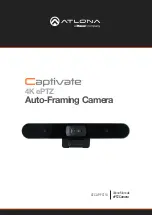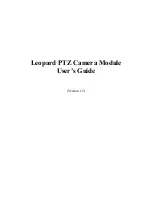
2. SAFETY PRECAUTIONS
2.1. GENERAL GUIDELINES
1. IMPORTANT SAFETY NOTICE
There are special components used in this equipment which are
important for safety. These parts are marked by in the
Schematic Diagrams, Circuit Board Layout, Exploded Views and
Replacement Parts List. It is essential thatthese critical parts
should be replaced with manufacturer’s specified parts to prevent
X-RADIATION, shock, fire, or other hazards. Do not modify the
original design without permission of manufacturer.
2. An Isolation Transformer should always be used during the
servicing of AC Adaptor whose chassis is not isolated from the
AC power line. Use a transformer of adequate power rating as this
protects the technician from accidents resulting in personalinjury
from electrical shocks. It will also protect AC Adaptor from being
damaged by accidental shorting that may occur during servicing.
3. When servicing, observe the original lead dress. If a short circuit
is found, replace all parts which have been overheated or
damaged by the short circuit.
4. After servicing, see to it that all the protective devices such as
insulation barriers, insulation papers shields are properly
installed.
5. After servicing, make the following leakage current checks to
prevent the customer from being exposed to shock hazards.
2.2. LEAKAGE CURRENT COLD CHECK
1. Unplug the AC cord and connect a jumper between the two
prongs on the plug.
2. Measure the resistance value, with an ohmmeter, between the
jumpered AC plug and each exposed metallic cabinet part on the
equipment such as screwheads, connectors, control shafts, etc.
When the exposed metallic part has a return path to thechassis,
the reading should be between 1 M and 5.2 M . When the
exposed metal does not have a return path to the chassis, the
6
Summary of Contents for Lumix DMC-LC1PP
Page 20: ...12 2 C B A LOCATION 12 3 DIASSEMBLY PROCEDURE 20...
Page 23: ...Fig D2 23...
Page 24: ...12 3 2 Removal of the Rear Operation Unit and Speaker Fig D3 24...
Page 25: ...12 3 3 Removal of the LCD Unit Fig D4 12 3 4 Removal of the Main C B A Fig D5 25...
Page 26: ...12 3 5 Removal of the Top Case Unit Fig D6 26...
Page 27: ...12 3 6 Removal of the Top Operation Unit Fig D7 27...
Page 28: ...Fig D8 12 3 7 Removal of the Hot Shoe Unit Fig D9 28...
Page 29: ...12 3 8 Removal of the Flash Unit Fig D10 29...
Page 30: ...Fig D11 30...
Page 32: ...12 3 11 Removal of the Jack Door Unit Fig D14 32...
Page 33: ...12 3 12 Removal of the Jack flash C B A Fig D15 33...
Page 36: ...12 4 1 Removal of the FI Ring Unit 36...
Page 37: ...12 4 2 Removal of the Zoom Ring Unit 37...
Page 38: ...12 4 3 Removal of the Master Flange Unit 38...
Page 39: ...39...
Page 40: ...40...
Page 41: ...12 4 4 Removal of the 5th Lens Frame Unit 41...
Page 42: ...12 4 5 Removal of the Shutter Unit 4th Flare Cut Plate and 4th Lens Flame Unit 42...
Page 43: ...12 4 6 Removal of the Fix Aperture Plate 12 4 7 Removal of the 3rd Lens Frame Unit 43...
Page 44: ...12 4 8 Removal of the Cam Frame Unit 12 4 9 Removal of the 2nd Lens Frame Unit 44...
Page 45: ...12 4 10 Removal of the L and S Guide Pole 45...
Page 47: ...47...
Page 48: ...48...
Page 49: ...15 2 PACKING PARTS ACCESSORIES SECTION 49...
Page 78: ......
Page 79: ......
Page 80: ......







































